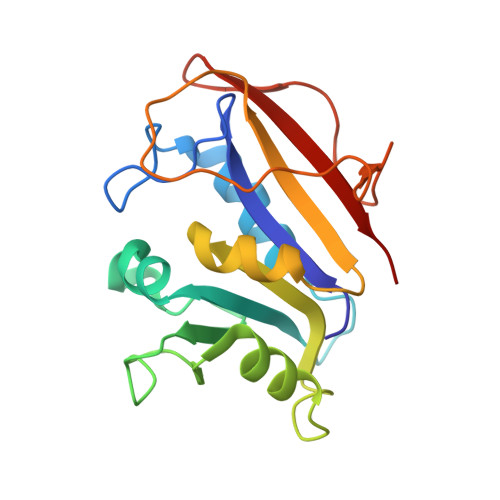Design, synthesis, and X-ray crystal structures of 2,4-diaminofuro[2,3-d]pyrimidines as multireceptor tyrosine kinase and dihydrofolate reductase inhibitors.
Gangjee, A., Li, W., Lin, L., Zeng, Y., Ihnat, M., Warnke, L.A., Green, D.W., Cody, V., Pace, J., Queener, S.F.(2009) Bioorg Med Chem 17: 7324-7336
- PubMed: 19748785
- DOI: https://doi.org/10.1016/j.bmc.2009.08.044
- Primary Citation of Related Structures:
3K45, 3K47 - PubMed Abstract:
To optimize dual receptor tyrosine kinase (RTK) and dihydrofolate reductase (DHFR) inhibition, the E- and Z-isomers of 5-[2-(2-methoxyphenyl)prop-1-en-1-yl]furo[2,3-d]pyrimidine-2,4-diamines (1a and 1b) were separated by HPLC and the X-ray crystal structures (2.0 and 1.4A, respectively) with mouse DHFR and NADPH as well as 1b with human DHFR (1.5A) were determined. The E- and Z-isomers adopt different binding modes when bound to mouse DHFR. A series of 2,4-diaminofuro[2,3-d]pyrimidines 2-13 were designed and synthesized using the X-ray crystal structures of 1a and 1b with DHFR to increase their DHFR inhibitory activity. Wittig reactions of appropriate 2-methoxyphenyl ketones with 2,4-diamino-6-chloromethyl furo[2,3-d]pyrimidine afforded the C8-C9 unsaturated compounds 2-7 and catalytic reduction gave the saturated 8-13. Homologation of the C9-methyl analog maintains DHFR inhibitory activity. In addition, inhibition of EGFR and PDGFR-beta were discovered for saturated C9-homologated analogs 9 and 10 that were absent in the saturated C9-methyl analogs.
- Division of Medicinal Chemistry, Graduate School of Pharmaceutical Sciences, Duquesne University, 600 Forbes Avenue, Pittsburgh, PA 15282, USA. gangjee@duq.edu
Organizational Affiliation:


















